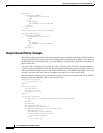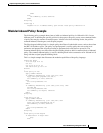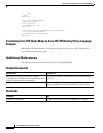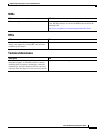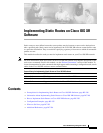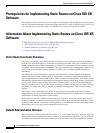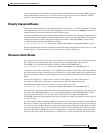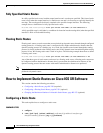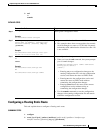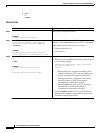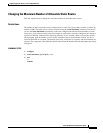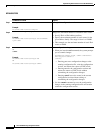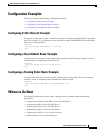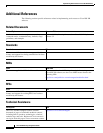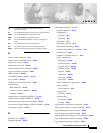
Implementing Static Routes on Cisco IOS XR Software
How to Implement Static Routes on Cisco IOS XR Software
RC-250
Cisco IOS XR Routing Configuration Guide
Fully Specified Static Routes
In a fully specified static route, both the output interface and next hop are specified. This form of static
route is used when the output interface is a multiaccess one and it is necessary to explicitly identify the
next hop. The next hop must be directly attached to the specified output interface. The following
example shows a definition of a fully specified static route:
RP/0/RP0/CPU0:router(config)# route ipv6 unicast 2001:0DB8::/32 2001:0DB8:3000::1
A fully specified route is valid (that is, a candidate for insertion into the routing table) when the specified
interface is IPv4 or IPv6 enabled and up.
Floating Static Routes
Floating static routes are static routes that are used to back up dynamic routes learned through configured
routing protocols. A floating static route is configured with a higher administrative distance than the
dynamic routing protocol it is backing up. As a result, the dynamic route learned through the routing
protocol is always preferred to the floating static route. If the dynamic route learned through the routing
protocol is lost, the floating static route is used in its place. The following example shows how to define
a floating static route:
RP/0/RP0/CPU0:router(config)# route ipv6 unicast 2001:0DB8::/32 2001:0DB8:3000::1 210
Any of the three types of static routes can be used as a floating static route. A floating static route must
be configured with an administrative distance that is greater than the administrative distance of the
dynamic routing protocol because routes with smaller administrative distances are preferred.
Note By default, static routes have smaller administrative distances than dynamic routes, so static routes
preferred to dynamic routes.
How to Implement Static Routes on Cisco IOS XR Software
This section contains the following procedures:
• Configuring a Static Route, page RC-250 (required)
• Configuring a Floating Static Route, page RC-251 (optional)
• Changing the Maximum Number of Allowable Static Routes, page RC-253 (optional)
Configuring a Static Route
This task explains how to configure a static route.
SUMMARY STEPS
1. configure
2. route {ipv4 | ipv6} {unicast | multicast} prefix mask {ip-address | interface-type
interface-instance} [distance] [tag tag] [permanent]



